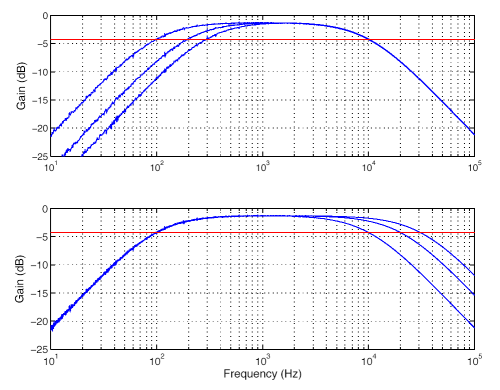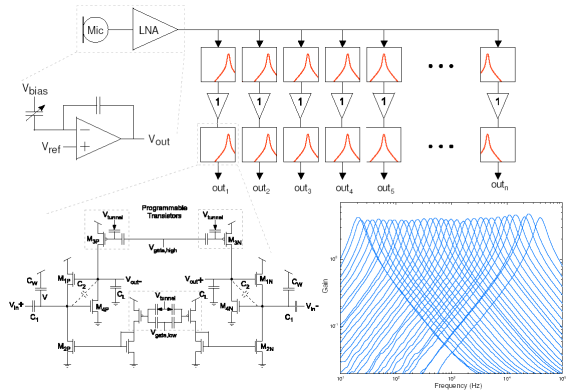Research :: Biologically Inspired Audio Signal Processing Using Programmable Analog Circuitry
The object of this research is the development of a biologically inspired audio signal-processing system using programmable analog circuitry. The human cochlea efficiently decomposes any sound into its respective frequency components by harnessing the resonant nature of the basilar membrane, essentially forming a bank of bandpass filters. In a similar fashion, this research consists of developing a filterbank composed of continuous-time, low-power, analog bandpass filters that will serve as the core front end to this silicon audio processing system. Like biology, the individual bandpass filters will be tuned to have narrow bandwidths, moderate amounts of resonance, and exponentially spaced center frequencies. In order to overcome mismatch and offsets inherent in CMOS processes, floating-gate transistors will be used to precisely tune the time constants in the filters and to allow programmability of analog components.
|
|
|
| Figure 1: The "C4", a capacitively coupled current conveyor. A compact, low power, tunnable bandpass filter, this circuit enables the assemblage of large arrays of filters. |
|
|
|
| Figure 2: The response of the C4 is programmed using refined floating gate programming techniques that allow the lower and upper cutoff frequencies to be set as desired. |
|
|
| Figure 3: When integrated with other components, the C4 can be used to build complex auditory systems. Large scale parallel frequency selectivity allows processing on signals to be done on frequency components in a distributed fashion much like biology. |
References
[1]
back to Key Technologies




